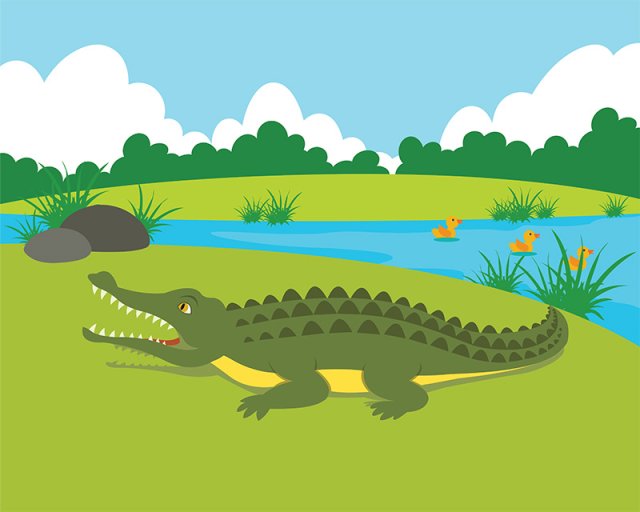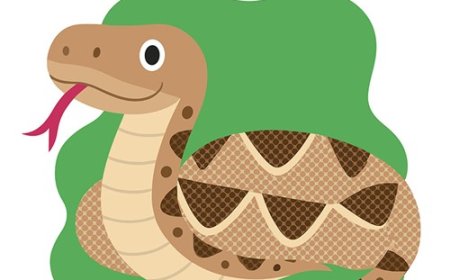Lizard

🦎 Lizards: Scaled Survivors of the Animal Kingdom
Introduction to Lizards
Lizards are fascinating reptiles that belong to a group called Squamata, which also includes snakes. With over 6,000 species found on every continent except Antarctica, lizards are one of the most diverse and widespread groups of reptiles. They come in many shapes, sizes, and colors, from the tiny dwarf gecko that fits on your fingertip to the massive Komodo dragon, which can grow over 10 feet long. Lizards are cold-blooded, meaning they rely on their environment to regulate their body temperature. These creatures have adapted to many habitats, including deserts, forests, grasslands, and even urban areas.
Physical Characteristics
Most lizards have a long body, four legs, movable eyelids, external ear openings, and a long tail. Their bodies are covered in scales, which help prevent water loss and protect their skin. Lizards come in a wide range of colors and patterns, often used for camouflage, attracting mates, or warning predators.
Unlike snakes, most lizards have legs and can blink, although some legless lizards closely resemble snakes. Many species can shed their tails as a defense mechanism—a process called autotomy. When a predator grabs the tail, the lizard detaches it and escapes while the tail wriggles to distract the predator. Over time, the tail grows back, although it is often shorter or differently colored than the original.
Senses and Behavior
Lizards rely on their sharp eyesight and keen sense of smell to find food and detect danger. Many lizards use their tongues to collect scent particles and deliver them to a special organ in the roof of the mouth, much like snakes do. Some lizards, such as chameleons, have the unique ability to move their eyes independently, giving them a wide field of vision.
Behavior among lizards varies by species. Some are solitary and territorial, using head bobs, push-ups, or colorful displays to warn off rivals or attract mates. Others, like geckos and skinks, may live in loose social groups. While most lizards are harmless and shy, a few species, like the Komodo dragon, are strong predators with venomous bites.
Diet and Feeding Habits
Lizards are generally carnivorous or insectivorous, feeding on insects, spiders, worms, and small animals. Some larger species may hunt birds, mammals, or other reptiles. Lizards like iguanas and chuckwallas are herbivorous, eating leaves, flowers, and fruits. A few species, such as the omnivorous bearded dragon, eat both plant and animal matter.
Lizards use different hunting techniques. Some, like geckos, actively search for prey, while others, like anoles, wait and ambush insects as they pass by. Many lizards use their sticky tongues, speed, or stealth to catch food. They swallow prey whole and rely on their digestive systems to break it down.
Habitat and Distribution
Lizards live in almost every environment on Earth, from the hottest deserts to humid rainforests, grasslands, rocky cliffs, and even suburban backyards. Deserts are especially rich in lizard diversity because these reptiles are well-suited to dry conditions. Lizards absorb heat from the sun during the day to stay active, then rest in shaded or burrowed areas to avoid overheating.
Some lizards live in trees and have adaptations for climbing, like sticky toe pads or curved claws. Others, like monitor lizards and skinks, are ground-dwelling and can run quickly across sand or soil. A few species, like flying dragons and gliding geckos, can even glide from tree to tree using skin flaps or flattened tails.
Reproduction and Lifecycles
Most lizards reproduce by laying eggs, though a few species give birth to live young. The number of eggs varies by species, with some laying only one or two, and others laying dozens. Female lizards may dig a hole in the ground to bury their eggs, which incubate for several weeks before hatching. In most cases, young lizards are independent from birth and receive no parental care.
Some species can reproduce through parthenogenesis, a process where females produce offspring without mating. This rare trait is found in a few types of whiptail lizards. Most lizards reach maturity within a year or two, depending on the species and environmental conditions, and can live anywhere from a few years to several decades.
Defensive Strategies
Lizards have many ways to defend themselves from predators. Camouflage is a common strategy, helping them blend into their surroundings to avoid detection. Some lizards have bright colors or display behaviors, like puffing out their throats or flaring crests, to scare off threats.
As mentioned earlier, many lizards can shed their tails to escape danger. Other defenses include biting, hissing, or fleeing quickly. Some species, such as horned lizards, have more dramatic defenses—they can squirt blood from their eyes to confuse predators.
Importance to Ecosystems and Humans
Lizards play an important role in ecosystems as both predators and prey. They help control insect populations and are a food source for birds, snakes, and mammals. Because they are sensitive to environmental changes, lizards are useful indicators of ecosystem health.
Humans have long been fascinated by lizards. Some are kept as pets, like geckos, anoles, and bearded dragons. Others are studied by scientists to learn about evolution, regeneration, and ecology. In some cultures, lizards appear in myths, stories, or symbols. However, habitat destruction, climate change, and the pet trade threaten some species, especially those with limited ranges.
Interesting Facts About Lizards
- The Komodo dragon is the largest lizard in the world, growing up to 10 feet (3 meters) long.
- Some lizards, like geckos, can climb smooth surfaces and walk on ceilings.
- The horned lizard can squirt blood from its eyes as a defense.
- Chameleons can move their eyes independently and change skin color for communication and camouflage.
- Lizards have a third eye—called a parietal eye—on top of their head, which senses light and helps regulate daily cycles.
- Some lizards, like the green basilisk, can run across water for short distances.
- Tail shedding is a common defense—lost tails can regenerate over time.
- Lizards use body language like head bobbing and push-ups to communicate.
- Certain species, such as whiptail lizards, can reproduce without males.
- Lizards live on every continent except Antarctica.


















































